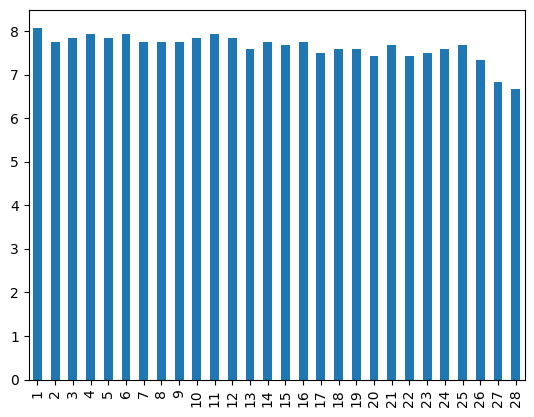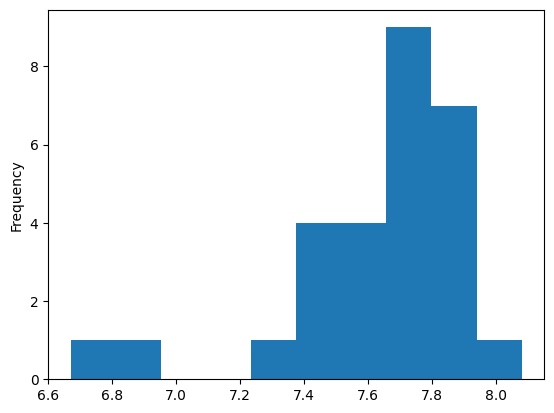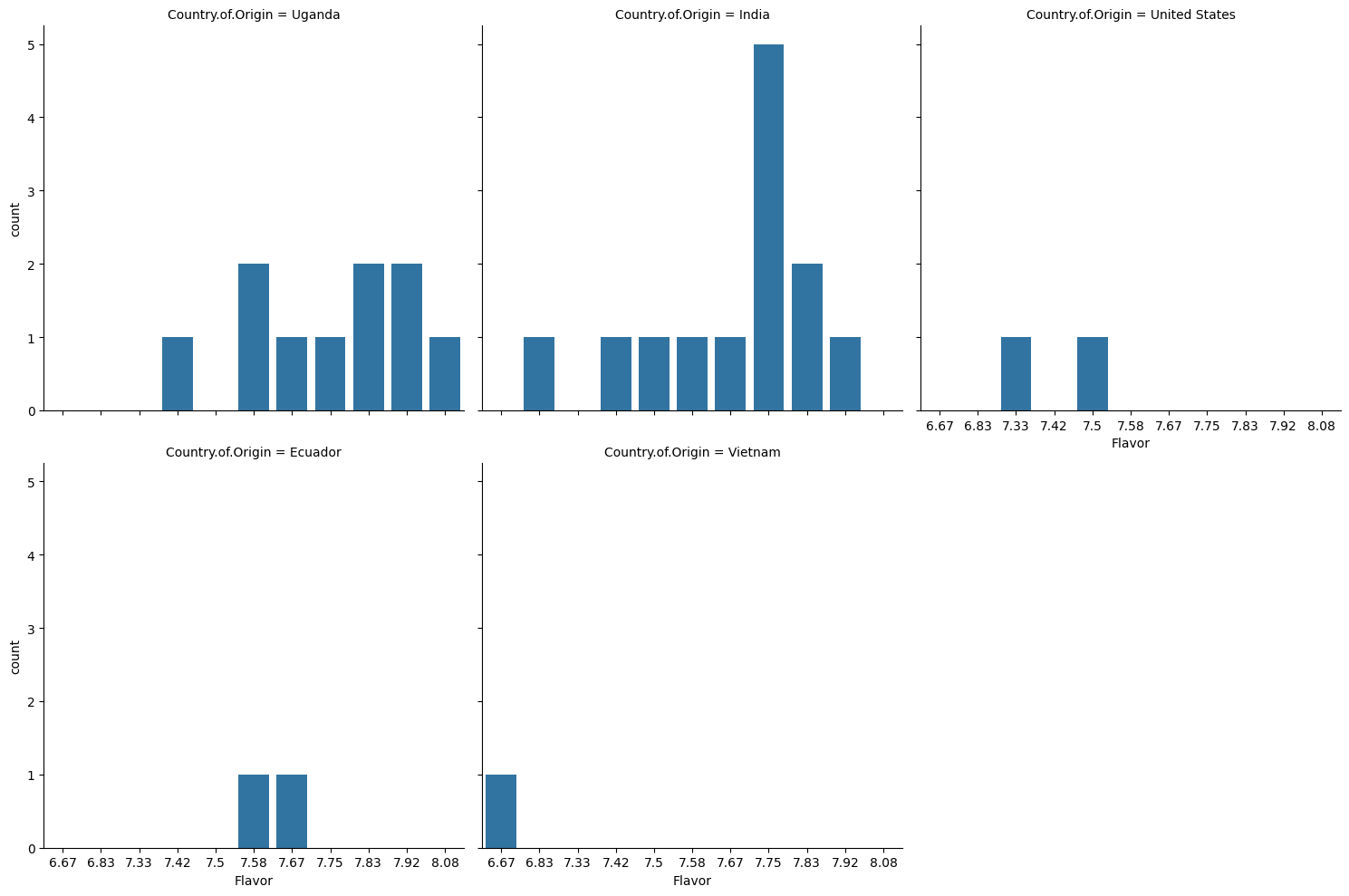4. Exploratory Data Analysis#
Now we get to start actual data science!
4.1. First, a note on assignments#
4.1.1. the goal#
I am not looking for “an answer”
You should not be either
I am looking for evidence that you understand the material (thus far including prereqs)
You should be trying to understand material
This means that in office hours, I am going to:
ask you questions to help you think about the problem and the material
help direct your attention to the right part of the error message to figure out what is wrong
4.1.2. Getting help#
Sending me a screenshot is almost guaranteed to not get you a help. Not because I do not want to, but because I literally do not have the information to get you an answer.
Typically when someone do not know how to fix something from the error message, it is because they are reading the wrong part of the error message or looking at the wrong part of the code trying to find the problem.
This means they end up screenshotting that wrong thing, so I literally cannot tell what is wrong from the screenshot.
I am not being stubborn, I just literally cannot tell what is wrong because I do not have enough information. Debugging code requires context, if you deprive me that, then I cannot help.
To get asynchronous help:
upload your whole notebook, errors and all
create an issue on that repo
4.2. This week: Exploratory Data Analysis#
How to summarize data
Interpretting summaries
Visualizing data
interpretting summaries
4.2.1. Summarizing and Visualizing Data are very important#
People cannot interpret high dimensional or large samples quickly
Important in EDA to help you make decisions about the rest of your analysis
Important in how you report your results
Summaries are similar calculations to performance metrics we will see later
visualizations are often essential in debugging models
THEREFORE
You have a lot of chances to earn summarize and visualize
we will be picky when we assess if you earned them or not
import pandas as pd
coffee_data_url = 'https://raw.githubusercontent.com/jldbc/coffee-quality-database/master/data/robusta_data_cleaned.csv'
coffee_df = pd.read_csv(coffee_data_url, index_col=0)
coffee_df.head(1)
| Species | Owner | Country.of.Origin | Farm.Name | Lot.Number | Mill | ICO.Number | Company | Altitude | Region | ... | Color | Category.Two.Defects | Expiration | Certification.Body | Certification.Address | Certification.Contact | unit_of_measurement | altitude_low_meters | altitude_high_meters | altitude_mean_meters | |
|---|---|---|---|---|---|---|---|---|---|---|---|---|---|---|---|---|---|---|---|---|---|
| 1 | Robusta | ankole coffee producers coop | Uganda | kyangundu cooperative society | NaN | ankole coffee producers | 0 | ankole coffee producers coop | 1488 | sheema south western | ... | Green | 2 | June 26th, 2015 | Uganda Coffee Development Authority | e36d0270932c3b657e96b7b0278dfd85dc0fe743 | 03077a1c6bac60e6f514691634a7f6eb5c85aae8 | m | 1488.0 | 1488.0 | 1488.0 |
1 rows × 43 columns
4.3. Describing a Dataset#
So far, we’ve loaded data in a few different ways and then we’ve examined DataFrames as a data structure, looking at what different attributes they have and what some of the methods are, and how to get data into them.
We can also get more structural information with the info
coffee_df.info()
<class 'pandas.core.frame.DataFrame'>
Index: 28 entries, 1 to 28
Data columns (total 43 columns):
# Column Non-Null Count Dtype
--- ------ -------------- -----
0 Species 28 non-null object
1 Owner 28 non-null object
2 Country.of.Origin 28 non-null object
3 Farm.Name 25 non-null object
4 Lot.Number 6 non-null object
5 Mill 20 non-null object
6 ICO.Number 17 non-null object
7 Company 28 non-null object
8 Altitude 25 non-null object
9 Region 26 non-null object
10 Producer 26 non-null object
11 Number.of.Bags 28 non-null int64
12 Bag.Weight 28 non-null object
13 In.Country.Partner 28 non-null object
14 Harvest.Year 28 non-null int64
15 Grading.Date 28 non-null object
16 Owner.1 28 non-null object
17 Variety 3 non-null object
18 Processing.Method 10 non-null object
19 Fragrance...Aroma 28 non-null float64
20 Flavor 28 non-null float64
21 Aftertaste 28 non-null float64
22 Salt...Acid 28 non-null float64
23 Bitter...Sweet 28 non-null float64
24 Mouthfeel 28 non-null float64
25 Uniform.Cup 28 non-null float64
26 Clean.Cup 28 non-null float64
27 Balance 28 non-null float64
28 Cupper.Points 28 non-null float64
29 Total.Cup.Points 28 non-null float64
30 Moisture 28 non-null float64
31 Category.One.Defects 28 non-null int64
32 Quakers 28 non-null int64
33 Color 25 non-null object
34 Category.Two.Defects 28 non-null int64
35 Expiration 28 non-null object
36 Certification.Body 28 non-null object
37 Certification.Address 28 non-null object
38 Certification.Contact 28 non-null object
39 unit_of_measurement 28 non-null object
40 altitude_low_meters 25 non-null float64
41 altitude_high_meters 25 non-null float64
42 altitude_mean_meters 25 non-null float64
dtypes: float64(15), int64(5), object(23)
memory usage: 9.6+ KB
Now, we can actually start to analyze the data itself.
The describe method provides us with a set of summary statistics that broadly
coffee_df.describe()
| Number.of.Bags | Harvest.Year | Fragrance...Aroma | Flavor | Aftertaste | Salt...Acid | Bitter...Sweet | Mouthfeel | Uniform.Cup | Clean.Cup | Balance | Cupper.Points | Total.Cup.Points | Moisture | Category.One.Defects | Quakers | Category.Two.Defects | altitude_low_meters | altitude_high_meters | altitude_mean_meters | |
|---|---|---|---|---|---|---|---|---|---|---|---|---|---|---|---|---|---|---|---|---|
| count | 28.000000 | 28.000000 | 28.000000 | 28.000000 | 28.000000 | 28.000000 | 28.000000 | 28.000000 | 28.000000 | 28.000000 | 28.000000 | 28.000000 | 28.000000 | 28.000000 | 28.000000 | 28.0 | 28.000000 | 25.00000 | 25.000000 | 25.000000 |
| mean | 168.000000 | 2013.964286 | 7.702500 | 7.630714 | 7.559643 | 7.657143 | 7.675714 | 7.506786 | 9.904286 | 9.928214 | 7.541786 | 7.761429 | 80.868929 | 0.065714 | 2.964286 | 0.0 | 1.892857 | 1367.60000 | 1387.600000 | 1377.600000 |
| std | 143.226317 | 1.346660 | 0.296156 | 0.303656 | 0.342469 | 0.261773 | 0.317063 | 0.725152 | 0.238753 | 0.211030 | 0.526076 | 0.330507 | 2.441233 | 0.058464 | 12.357280 | 0.0 | 2.601129 | 838.06205 | 831.884207 | 833.980216 |
| min | 1.000000 | 2012.000000 | 6.750000 | 6.670000 | 6.500000 | 6.830000 | 6.670000 | 5.080000 | 9.330000 | 9.330000 | 5.250000 | 6.920000 | 73.750000 | 0.000000 | 0.000000 | 0.0 | 0.000000 | 40.00000 | 40.000000 | 40.000000 |
| 25% | 1.000000 | 2013.000000 | 7.580000 | 7.560000 | 7.397500 | 7.560000 | 7.580000 | 7.500000 | 10.000000 | 10.000000 | 7.500000 | 7.580000 | 80.170000 | 0.000000 | 0.000000 | 0.0 | 0.000000 | 795.00000 | 795.000000 | 795.000000 |
| 50% | 170.000000 | 2014.000000 | 7.670000 | 7.710000 | 7.670000 | 7.710000 | 7.750000 | 7.670000 | 10.000000 | 10.000000 | 7.670000 | 7.830000 | 81.500000 | 0.100000 | 0.000000 | 0.0 | 1.000000 | 1095.00000 | 1200.000000 | 1100.000000 |
| 75% | 320.000000 | 2015.000000 | 7.920000 | 7.830000 | 7.770000 | 7.830000 | 7.830000 | 7.830000 | 10.000000 | 10.000000 | 7.830000 | 7.920000 | 82.520000 | 0.120000 | 0.000000 | 0.0 | 2.000000 | 1488.00000 | 1488.000000 | 1488.000000 |
| max | 320.000000 | 2017.000000 | 8.330000 | 8.080000 | 7.920000 | 8.000000 | 8.420000 | 8.250000 | 10.000000 | 10.000000 | 8.000000 | 8.580000 | 83.750000 | 0.130000 | 63.000000 | 0.0 | 9.000000 | 3170.00000 | 3170.000000 | 3170.000000 |
From this, we can draw several conclusions. FOr example straightforward ones like:
the smallest number of bags rated is 1 and at least 25% of the coffees rates only had 1 bag
the first ratings included were 2012 and last in 2017 (min & max)
the mean Mouthfeel was 7.5
Category One defects are not very common ( the 75th% is 0)
Or more nuanced ones that compare across variables like
the raters scored coffee higher on Uniformity.Cup and Clean.Cup than other scores (mean score; only on the ones that seem to have a scale of up to 8/10)
the coffee varied more in Mouthfeel and Balance that most other scores (the std; only on the ones that seem to have a scale of of up to 8/10)
there are 3 ratings with no altitude (count of other variables is 28; alt is 25)
And these all give us a sense of the values and the distribution or spread fo the data in each column.
4.3.1. Understanding Quantiles#
The 50% has another more common name: the median. It means 50% of the data are lower (and higher) than this value.
4.3.2. Individual variable#
We can use the descriptive statistics on individual columns as well.
coffee_df['Balance'].descirbe()
---------------------------------------------------------------------------
AttributeError Traceback (most recent call last)
/tmp/ipykernel_2089/957071290.py in ?()
----> 1 coffee_df['Balance'].descirbe()
/opt/hostedtoolcache/Python/3.8.18/x64/lib/python3.8/site-packages/pandas/core/generic.py in ?(self, name)
5985 and name not in self._accessors
5986 and self._info_axis._can_hold_identifiers_and_holds_name(name)
5987 ):
5988 return self[name]
-> 5989 return object.__getattribute__(self, name)
AttributeError: 'Series' object has no attribute 'descirbe'
This is an AttributeError because there is no method or property of a pd.Series that is named 'descirbe' that tells me it is a typo.
coffee_df['Balance'].describe()
count 28.000000
mean 7.541786
std 0.526076
min 5.250000
25% 7.500000
50% 7.670000
75% 7.830000
max 8.000000
Name: Balance, dtype: float64
4.4. Individual statistics#
We can also extract each of the statistics that the describe method calculates individually, by name.
coffee_df.mean(numeric_only=True)
Number.of.Bags 168.000000
Harvest.Year 2013.964286
Fragrance...Aroma 7.702500
Flavor 7.630714
Aftertaste 7.559643
Salt...Acid 7.657143
Bitter...Sweet 7.675714
Mouthfeel 7.506786
Uniform.Cup 9.904286
Clean.Cup 9.928214
Balance 7.541786
Cupper.Points 7.761429
Total.Cup.Points 80.868929
Moisture 0.065714
Category.One.Defects 2.964286
Quakers 0.000000
Category.Two.Defects 1.892857
altitude_low_meters 1367.600000
altitude_high_meters 1387.600000
altitude_mean_meters 1377.600000
dtype: float64
coffee_df.min(numeric_only=True)
Number.of.Bags 1.00
Harvest.Year 2012.00
Fragrance...Aroma 6.75
Flavor 6.67
Aftertaste 6.50
Salt...Acid 6.83
Bitter...Sweet 6.67
Mouthfeel 5.08
Uniform.Cup 9.33
Clean.Cup 9.33
Balance 5.25
Cupper.Points 6.92
Total.Cup.Points 73.75
Moisture 0.00
Category.One.Defects 0.00
Quakers 0.00
Category.Two.Defects 0.00
altitude_low_meters 40.00
altitude_high_meters 40.00
altitude_mean_meters 40.00
dtype: float64
The quantiles
are tricky, we cannot just .25%() to get the 25% percentile, we have to use the
quantile method and pass it a value between 0 and 1.
coffee_df['Flavor'].quantile(.8)
7.83
coffee_df['Aftertaste'].mean()
7.559642857142856
4.5. Working with categorical data#
There are different columns in the describe than the the whole dataset:
coffee_df.columns
Index(['Species', 'Owner', 'Country.of.Origin', 'Farm.Name', 'Lot.Number',
'Mill', 'ICO.Number', 'Company', 'Altitude', 'Region', 'Producer',
'Number.of.Bags', 'Bag.Weight', 'In.Country.Partner', 'Harvest.Year',
'Grading.Date', 'Owner.1', 'Variety', 'Processing.Method',
'Fragrance...Aroma', 'Flavor', 'Aftertaste', 'Salt...Acid',
'Bitter...Sweet', 'Mouthfeel', 'Uniform.Cup', 'Clean.Cup', 'Balance',
'Cupper.Points', 'Total.Cup.Points', 'Moisture', 'Category.One.Defects',
'Quakers', 'Color', 'Category.Two.Defects', 'Expiration',
'Certification.Body', 'Certification.Address', 'Certification.Contact',
'unit_of_measurement', 'altitude_low_meters', 'altitude_high_meters',
'altitude_mean_meters'],
dtype='object')
So far, the stats above are only for numerical features.
We can get the prevalence of each one with value_counts
coffee_df['Color'].value_counts()
Color
Green 20
Blue-Green 3
Bluish-Green 2
Name: count, dtype: int64
Try it Yourself
Note value_counts does not count the NaN values, but count counts all of the
not missing values and the shape of the DataFrame is the total number of rows.
How can you get the number of missing Colors?
Describe only operates on the numerical columns, but we might want to know about the others. We can get the number of each value with value_counts
What is the most common country of origin?
coffee_df['Country.of.Origin'].value_counts()
Country.of.Origin
India 13
Uganda 10
United States 2
Ecuador 2
Vietnam 1
Name: count, dtype: int64
Value counts returns a pandas Series that has two parts: values and index
coffee_df['Country.of.Origin'].value_counts().values
array([13, 10, 2, 2, 1])
coffee_df['Country.of.Origin'].value_counts().index
Index(['India', 'Uganda', 'United States', 'Ecuador', 'Vietnam'], dtype='object', name='Country.of.Origin')
The max method takes the max of the values.
coffee_df['Country.of.Origin'].value_counts().max()
13
We can get the name of the most common country out of this Series using idmax
coffee_df['Country.of.Origin'].value_counts().idxmax()
'India'
4.6. Which country scores highest on flavor?#
Let’s try to answer this with plots first
coffee_df['Flavor'].plot(kind='bar')
<Axes: >

coffee_df['Flavor'].plot(kind='hist')
<Axes: ylabel='Frequency'>

Seaborn give us opinionated defaults
import seaborn as sns
seaborn’s alias is sns as an inside joke among the developers to the character, Samual Norman Seaborn from West Wing they named the library after per their FAQ
So we can choose a typoe of plot and give it the whole dataframe and pass the variables to different parameters for them to be used in different ways.
sns.catplot(data =coffee_df, x='Flavor',kind ='count',col='Country.of.Origin',
col_wrap=3)
<seaborn.axisgrid.FacetGrid at 0x7fce587e5e20>

4.6.1. Are any coffees more than one standard deviation above the average in Flavor ?#
coffee_df['Flavor'].mean() + coffee_df['Flavor'].std(), coffee_df['Flavor'].max()
(7.93437014076549, 8.08)
Yes, one is more than one standard deviation from the mean.
4.7. Questions after class#
4.7.1. can pycharm access urls?#
Probably, it should not block them and they are language features, but I do not use it to know.
4.7.2. can we do what we did today in pycharm?#
In theory, but pycharm probably will not handle the plots gracefully.
For this class, you need to submit notebook files, so pycharm will not work.
Pycharm is not typically used in datascience.
4.7.3. Are the bars on the Seaborn plot random colors, or do the colors have some meaning?#
here, each different value is a different color. We wil control it more on Thursday
4.7.4. what types of jobs use what we learned today#
Any data science role would use these skills daily.
4.7.5. Is there an equivalent for the index of the minimum value, such as idxmin()?#
4.7.6. What is the std#
standard deviation pandas docs on calculation. The wikipedia article on standard deviation is a good source on this.
4.7.7. Why can we not use matplotlib?#
You can and you may for some customizaiton, but seaborn usually makes things faster to code and easier to read. I will not teach much matplotlib, but if you know it, up to date, not outdated, you may use it in some cases.
4.7.8. One question I have is what exactly the series object can be used for#
A series is one column or one row of a dataframe.
4.7.9. how these lines of code can be used more efficiently in larger data sets?#
For extremely large datasets if it’s too much to plot, you might, for exaple, sample the dataset to only plot a subset.
Otherwise this will still work.
4.7.10. Can you change what the plot graphs rather than an index vs frequency?#
yes, we can change the plot to whatever we want.
4.7.11. actually I would like to know like with our country/flavor example can they be put in the same plot but with different colors for the different countries to each country side by side for a given score#
yes
4.7.12. Can assignment 3 can be release so we can pre-read it over.#
Yes, it is posted now
4.8. Questions we’ll answer in class on thurday#
Important
These are great questions, I’m just not going to answer them here and then again in class on Thursday
What other types of graphs could be used?
Is there a way to use both x and y in sns without creating multiple charts?
Using matplotlib, we never got to use it to class, and I want to know the difference between that and seanborn
How to change the colors of the plots.
What do we usually tend to look for in terms of patterns when trying to formulate questions about the data, or several pieces of data?
